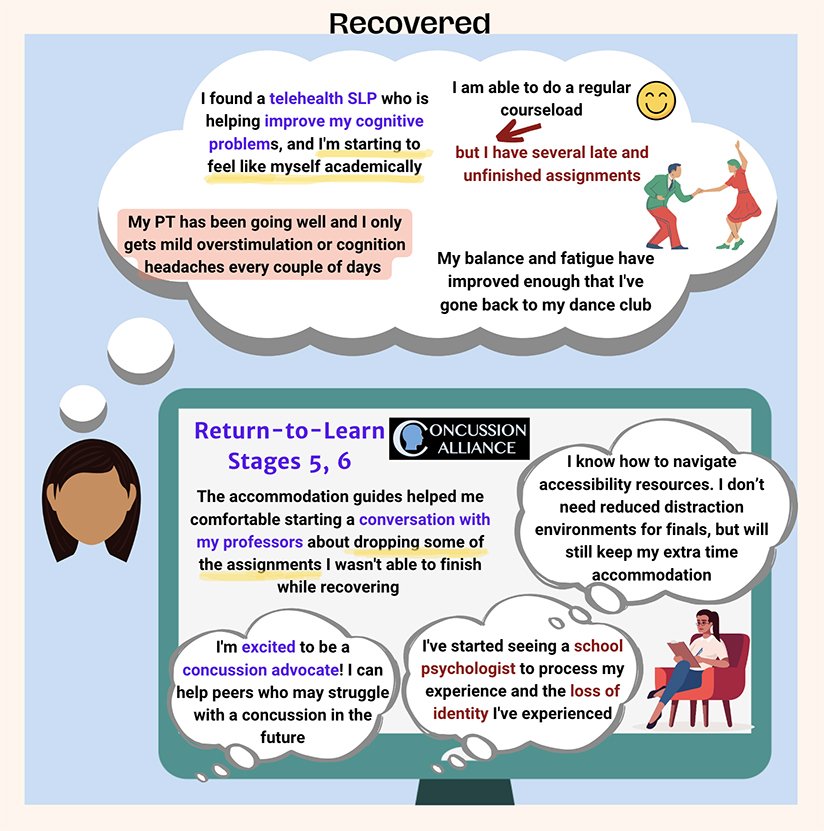Filling a gap: a unique, evidence-based resource for college students with all-cause concussion
Conor Gormally and Kira Kunzman with the poster at the 14th Annual World Congress on Brain Injury on March 31, 2023, in Dublin, Ireland
The following is a reproduction of the poster that Concussion Alliance presented at the 14th Annual World Congress on Brain Injury in Dublin, Ireland, on April 31. 2023. This poster is based on our College Students resource; the contributors to this poster, abstract, and the College Students resource are Conor Gormally, Malayka Gormally, Kaori Hirano, Kira Kunzman, and Elizabeth Sandel, MD.
Sport-related mechanisms and contexts dominate the quantitative and qualitative study of collegiate concussions. Non-sports-related concussion (nSRC) is more common than sports-related concussion (SRC) on college campuses and in the general population. College athletes and service academy cadets with nSRC have worse outcomes and more days lost to injury than those with SRC (Breck et al., 2019). There is a clear need for non-sport-specific, mild TBI-specific resources for college students navigating social and academic life with mild brain injury–the impacts on mental health, academics, and social life can be significant.
Concussion Alliance has developed a College Students concussion resource to address this gap. To maximize relevancy, we have engaged with collegiate stakeholder groups, including students who experienced concussions while in college, a disability peer leader, a varsity sports team captain, and college administrators. We have partially adapted RTL stages from multiple* leading grade-school and sport-related protocols.
Case: Connie C., a college sophomore, fell off her bike on the way to class Monday morning. She was wearing a helmet but hit her head.
Connie C., a 19-year-old college sophomore, was riding her bike toward campus when she hit a pothole and was thrown from her bike, landing on the shoulder of the road. She felt dizziness and a pounding headache as she tried to get up. The sunlight seemed very bright, and she felt pressure above her right ear and around her forehead near her eye. Two students helped her walk to the student health office on campus. A nurse practitioner diagnosed Connie with a concussion and advised her to rest for a few days and return to the clinic in a week.
This case study demonstrates Connie’s experiences after the acute concussion as she continues to stay in college, facing barriers to understanding what has happened to her remaining a successful student. She must educate herself about concussions and understand how to get help from healthcare providers and her friends. In this case, Concussion Alliance resources return-to-learn protocol, with accommodations and therapies, demonstrate a model for how a college student with a non-sports concussion can have a successful outcome with recommendations at various stages of recovery.
*We have partially adapted RTL stages from Parachute Canada’s Guideline on Concussion in Sport, US Air Force Academy’s Return-to-Learn, Northwestern University’s Concussion Management Plan, the Concussion Awareness Training Tool E-Learning Course for Parent and Caregiver, and Achieving Consensus Through a Modified Delphi Technique to Create the Post-concussion Collegiate Return-to-Learn Protocol.






